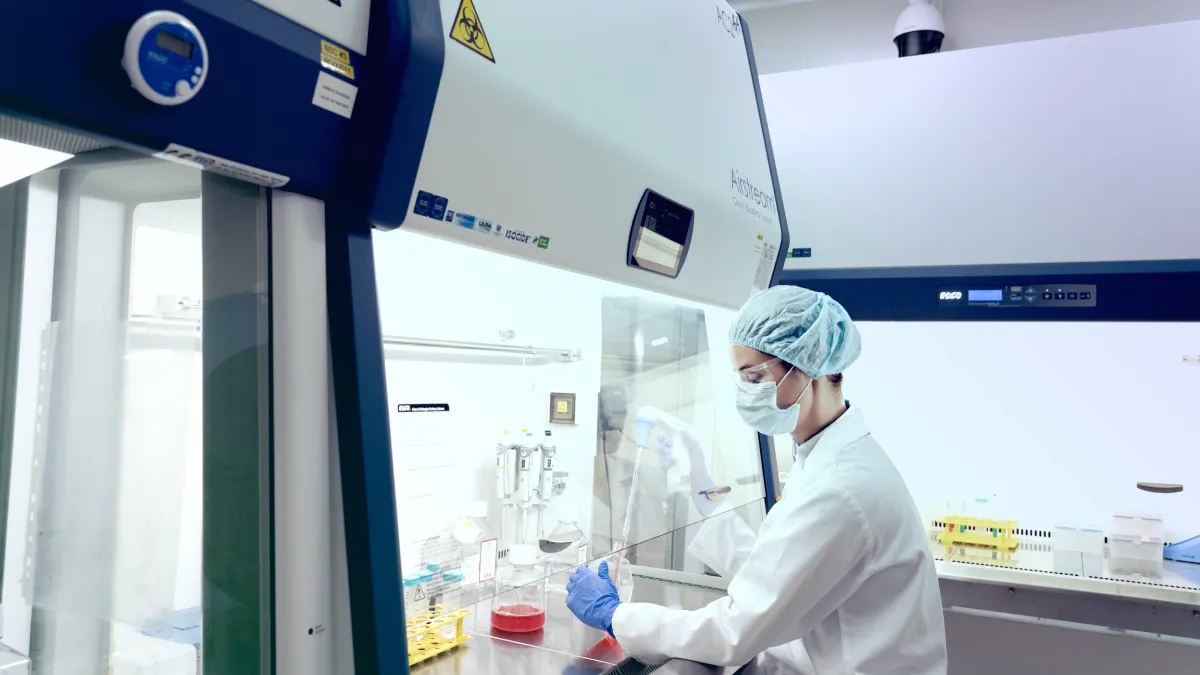Applications
Vaccination for All Ages

Infancy and Childhood
(Birth to 10 years of Age)
Vaccines are generally administered to children according to a recommended immunization schedule to prevent common and rare illnesses. Regular check-ups to the doctor are usually done to ensure children are up-to-date with their shots. The following diseases should be prevented through vaccination:
- Chickenpox – 1st dose between the twelfth month and fifteenth month. 2nd dose anytime between the fourth year and sixth year.
- Hepatitis A – administer 2-dose series between the twelfth month and third year.
- Hepatitis B – 1st dose of vaccine should be administered at birth followed by 2nd dose between the first month and second month and a 3rd dose between the sixth month and eighteenth month.
| Vaccine | Birth | 1 mo | 2 mos | 4 mos | 6 mos | 9 mos | 12 mos | 15 mos | 18 mos |
|---|---|---|---|---|---|---|---|---|---|
| Hepatitis B (HepB) | 1st dose | 2nd dose | 3rd dose | ||||||
| Rotavirus (RV) RV1 (2-dose series); RV (3-dose series) | 1st dose | 2nd dose | |||||||
| Diphtheria, tetanus, & acellular pertussis (DTaP: <7 yrs) | 1st dose | 2nd dose | 3rd dose | ||||||
| Haemophilus influenzae type b (Hib) | 4th dose | ||||||||
| Pneumococcal conjugate (PCV13) | 1st dose | 2nd dose | 3rd dose | 4th dose | |||||
| Inactivated poliovirus (IPV: <18 yrs) | 1st dose | 2nd dose | 3rd dose | ||||||
| Influenza (IIV) | Annual vaccination 1 or 2 doses | ||||||||
| Influenza (LAIV) | |||||||||
| Measles, mumps, rubella (MMR) | 1st dose | ||||||||
| Varicella (VAR) | 1st dose | ||||||||
| Hepatitis A | 1st dose | ||||||||
| Tetanus, diphteria, & acellular pertussis (Tdap: >7 yrs) | |||||||||
| Human papilloma virus | |||||||||
| Meningococcal (MenACWY-D: >9 mos; MenACWY-CRM: >2 mos | |||||||||
| Pneumococcal polysaccharide (PPSV23) | |||||||||
| Vaccine | 19 -23 mos | 2-3 yrs | 4-6 yrs | 7-10 yrs |
|---|---|---|---|---|
| Hepatitis B (HepB) | ||||
| Rotavirus (RV) RV1 (2-dose series); RV (3-dose series) | ||||
| Diphtheria, tetanus, & acellular pertussis (DTaP: <7 yrs) | 5th dose | |||
| Haemophilus influenzae type b (Hib) | ||||
| Pneumococcal conjugate (PCV13) | ||||
| Inactivated poliovirus (IPV: <18 yrs) | 5th dose | |||
| Influenza (IIV) | Annual vaccination 1 or 2 doses | Annual vaccination 1 or 2 doses only | ||
| Influenza (LAIV) | Annual vaccination 1 or 2 doses | Annual vaccination 1 dose only | ||
| Measles, mumps, rubella (MMR) | 2nd dose | |||
| Varicella (VAR) | 2nd dose | |||
| Hepatitis A | 2-dose series | |||
| Tetanus, diphteria, & acellular pertussis (Tdap: >7 yrs) | ||||
| Human papilloma virus | ||||
| Meningococcal (MenACWY-D: >9 mos; MenACWY-CRM: >2 mos | High-risk Groups | |||
| Pneumococcal polysaccharide (PPSV23) | High-risk Groups | |||

Adoloscents
(11 to 18 years of Age) Preteens and teenagers are still at high risk of getting infected and since they have fewer appointments to the doctor than when they were younger, they still need to be regularly immunized. Recommended vaccines are as follows:
Influenza (Flu) vaccine – 1 dose annually Tetanus, Diptheria, and Acellular pertussis (Tdap) - a booster shot is recommended at age 11-12. Meningococcal vaccine – 1st dose is administered at age 11-12 and a booster shot at age 16 to extend protection into the college years. Human papillomavirus – a 3-dose series between the age of 11 and 12.
Adolescents
Recommended Immunization Schedule from ages 11 years to 18 years
| Vaccine | 11-12 years | 13-15 years | 16-18 years |
|---|---|---|---|
| Hepatitis B (HepB) | |||
| Rotavirus (RV) RV1 (2-dose series); RV (3-dose series) | |||
| Diphtheria, tetanus, & acellular pertussis (DTaP: <7 yrs) | |||
| Haemophilus influenzae type b (Hib) | High-risk Groups | ||
| Pneumococcal conjugate (PCV13) | High-risk Groups | ||
| Inactivated poliovirus (IPV: <18 yrs) | |||
| Influenza (IIV) | Annual Vaccination 1 dose only | ||
| Influenza (LAIV) | Annual Vaccination 1 dose only | ||
| Measles, mumps, rubella (MMR) | |||
| Varicella (VAR) | |||
| Hepatitis A | |||
| Tetanus, diphteria, & acellular pertussis (Tdap: >7 yrs) | Tdap | ||
| Human papilloma virus | Case-dependent | ||
| Meningococcal (MenACWY-D: >9 mos; MenACWY-CRM: >2 mos | 1st dose | 2nd dose | |
| Pneumococcal polysaccharide (PPSV23) | High-risk Groups | ||

Maternal
Vaccination during pregnancy has shown to be effective in protecting the mother and unborn baby from illnesses. Maternal immunization provides immunity to the mother, fetus, and newborn baby through the transplacental transfer of vaccine maternal immunoglobulin G (IgG). Maternal IgG gives passive insusceptibility amid the initial 6 months of a newborn child's life preceding the baby's capacity to completely respond to immunization. Maternal immunization can likewise prevent sickness in both the mother and her unborn child during a highly risky situation in their lives. Presently, the only vaccines approved for use during pregnancy are for influenza (flu) and Tdap (tetanus-diphtheria-acellular pertussis). Other vaccines that should be consulted with a doctor before administering are for immunization from the following diseases: Hepatitis A, Hepatitis B, Meningococcal disease, and Pneumococcal disease.
Respiratory Synctial Virus (RSV)
The Respiratory Synctial Virus (RSV) in particular, causes infections of the lungs and the respiratory tract. It is a common illness that affects most children below two years of age. It is considered as the single most common reason for infant hospitalization in US, that 5 to 20 out of 1000 will require hospitalization according to the Centers for Disease Control and Prevention. Presently, a safe vaccine for RSV that can be given to infants has not yet been developed.
The use of a polyclonal antibody preparation called RSV-immunoglobulin intravenous (IGIV), marketed as RespiGam™ as a means of passive immunization against RSV was the first attempt of prevention. It is no longer commercially available due to advances in neutralizing monoclonal antibody technology. The Synagis®, is the only FDA-approved medication that may prevent RSV infections and protect high-risk babies from serious complications associated with RSV disease. Though not a vaccine, Synagis® contains virus-fighting antibodies that can be administered every 28-30 days. As the product is monoclonal antibody, protection is only for limited span of time, resulting in only short-term protection.

Adults
(19 - 64 years of Age)
As humans age, appointments to the doctor are becoming fewer thereby increasing their chances of getting infected since they are less likely to be up-to-date with their recommended vaccines. Immunization is an integral component of maintaining a healthy lifestyle and as such adults should be committed to it.
Throughout adulthood it is recommended that adults be vaccinated against the following diseases:
- Influenza (flu) – 1 dose should be administered annually
- Tetanus, diphtheria, pertussis (Tdap/Td) – administer Tdap vaccine once then Td booster every 10 years
- Hepatitis B – for adults who have diabetes or simply at high risk (3 doses)
- Hepatitis A – recommended if some other risk factor is present (3 doses)
- Human papillomavirus (HPV) – 3 doses between the ages of nineteen and twenty-six for females while 3 doses for males from ages of nineteen to twenty-one. The shots can be administered for males until the age of twenty-six though, if some other risk factor is present.
Adults
Recommended Immunization Schedule from the ages of 19 years to 64 years
| Vaccine | 19-26 years | 27-49 years | 50-64 years |
|---|---|---|---|
| Influenza inactivated (IIV) or Influenza recombinant (RIV) | 1 dose annually | ||
| Influenza live attenuated (LAIV) | 1 dose annually | ||
| Tetanus, diphtheria, pertussis (Tdap or Td) | 1 dose Tdap, then Td or Tdap booster every 10 yrs | ||
| Measles, mumps, rubella (MMR) | 1 or 2 doses depending on indication (if born in 1957 or later) | ||
| Varicella (VAR) | 2 doses (if born in 1980 or later) | 2 doses (for high-risk groups) | |
| Zoster recombinant (RZV) (preferred) | 2 doses | ||
| Zoster live (ZVL) | 1 doses | ||
| Human papillomavirus (HPV) | 2 or 3 doses depending on age at initial vaccination or condition | 27 through 45 years | |
| Pneumococccal conjugate (PCV13) | 1 dose | ||
| Pneumococccal polysaccharide (PPSV23) | 1 or 2 doses depending on indication | ||
| Hepatitis A | 2 or 3 doses depending on vaccine | ||
| Hepatitis B | 2 or 3 doses depending on vaccine | ||
| Meningococcal A, C, W, Y (MenACWY) | 1 or 2 doses depending on indication; CDC have booster recommendations | ||
| Meningococcal B (MenB) | 19-23 years 2 or 3 doses depending on vaccine indication | 2 or 3 doses depending on indication; CDC have booster recommendations | |
| Haemophilus influnzae type b (Hib) | 1 or 3 doses depending on indication | ||

Elderly/Senior Citizens
As humans age, appointments to the doctor are becoming fewer thereby increasing their chances of getting infected since they are less likely to be up-to-date with their recommended vaccines. Immunization is an integral component of maintaining a healthy lifestyle and as such adults should be committed to it.
Throughout adulthood it is recommended that adults be vaccinated against the following diseases:
- Influenza (flu) – 1 dose should be administered annually
- Tetanus, diphtheria, pertussis (Tdap/Td) – administer Tdap vaccine once then Td booster every 10 years
- Hepatitis B – for adults who have diabetes or simply at high risk (3 doses)
- Hepatitis A – recommended if some other risk factor is present (3 doses)
- Human papillomavirus (HPV) – 3 doses between the ages of nineteen and twenty-six for females while 3 doses for males from ages of nineteen to twenty-one. The shots can be administered for males until the age of twenty-six though, if some other risk factor is present.
- Measles, mumps, rubella (MMR)- 1 or 2 doses between the ages of nineteen and fifty-nine.
Adults
Recommended Immunization Schedule from the ages of 19 years to 64 years
| Vaccine | ≥ 65 years | |
|---|---|---|
| Influenza inactivated (IIV) or Influenza recombinant (RIV) | 1 dose annually | |
| Influenza live attenuated (LAIV) | ||
| Tetanus, diphtheria, pertussis (Tdap or Td) | 1 dose Tdap, then Td or Tdap booster every 10 yrs | |
| Measles, mumps, rubella (MMR) | ||
| Varicella (VAR) | 2 doses (for high-risk groups) | |
| Zoster recombinant (RZV) (preferred) | 2 doses | |
| Zoster live (ZVL) | 1 dose | |
| Human papillomavirus (HPV) | ||
| Pneumococccal conjugate (PCV13) | Recommended vaccination based on shared clinical decision-making | |
| Pneumococccal polysaccharide (PPSV23) | 1 dose | |
| Hepatitis A | 2 or 3 doses depending on vaccine | |
| Hepatitis B | 2 or 3 doses depending on vaccine | |
| Meningococcal A, C, W, Y (MenACWY) | 1 or 2 doses depending on indication; CDC have booster recommendations | |
| Meningococcal B (MenB) | 19-23 years 2 or 3 doses depending on vaccine indication | 2 or 3 doses depending on indication; CDC have booster recommendations |
| Haemophilus influnzae type b (Hib) | 1 or 3 doses depending on indication | |
Stay Updated!
Sign up to our newsletter and receive the latest news and updates about our products!





